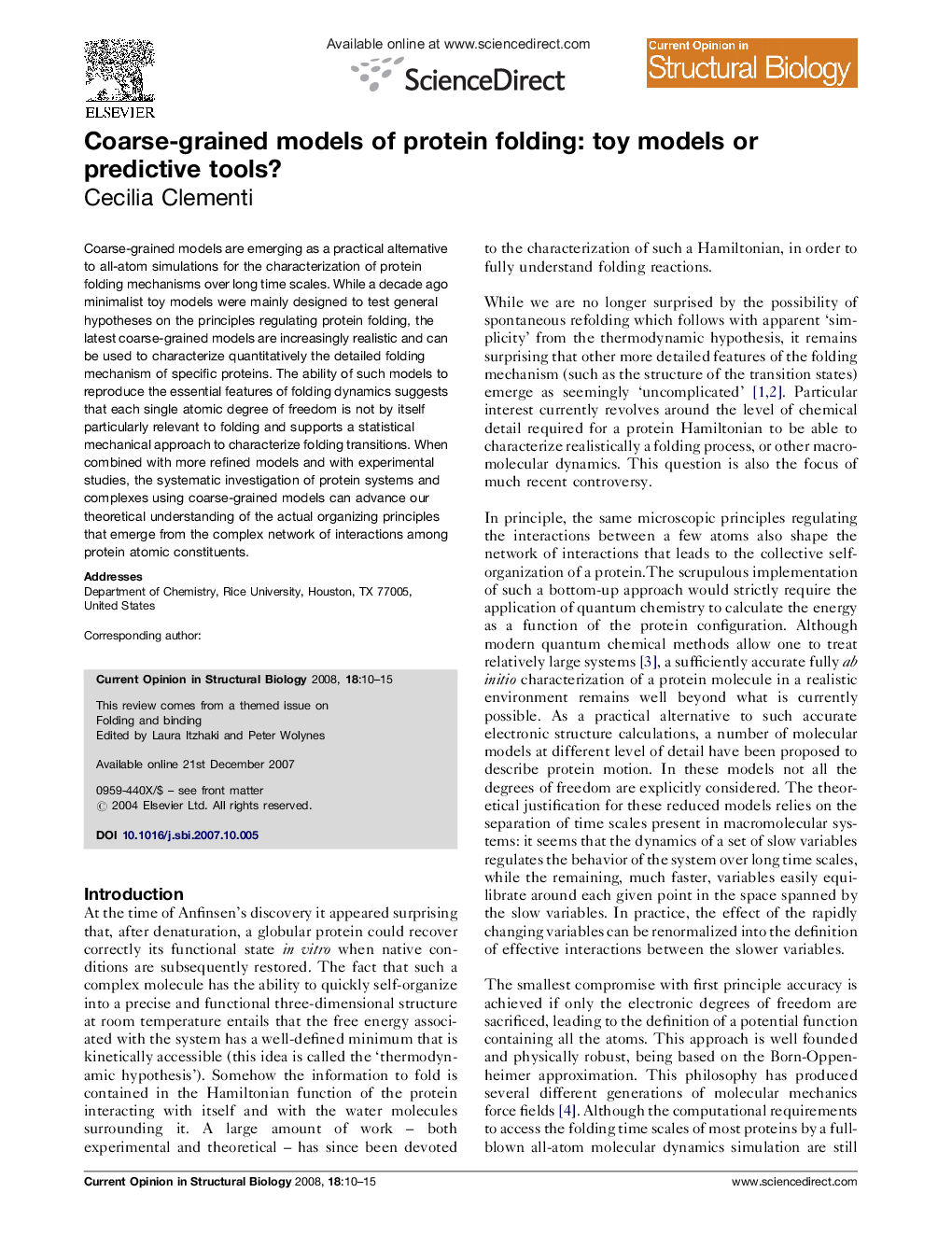| Article ID | Journal | Published Year | Pages | File Type |
|---|---|---|---|---|
| 1979547 | Current Opinion in Structural Biology | 2008 | 6 Pages |
Coarse-grained models are emerging as a practical alternative to all-atom simulations for the characterization of protein folding mechanisms over long time scales. While a decade ago minimalist toy models were mainly designed to test general hypotheses on the principles regulating protein folding, the latest coarse-grained models are increasingly realistic and can be used to characterize quantitatively the detailed folding mechanism of specific proteins. The ability of such models to reproduce the essential features of folding dynamics suggests that each single atomic degree of freedom is not by itself particularly relevant to folding and supports a statistical mechanical approach to characterize folding transitions. When combined with more refined models and with experimental studies, the systematic investigation of protein systems and complexes using coarse-grained models can advance our theoretical understanding of the actual organizing principles that emerge from the complex network of interactions among protein atomic constituents.
